Tuesday, January 31, 2012
Why History Needs Software Piracy
I just wanted to share this article from PC World's website. There has been recent concerns over SOPA and PIPA, and even more significantly the closure of Megaupload and other download sites. This represents an erosion of many years of archiving by valued sites such as Snesorama and RetroMags, to name but two. The latter of which has lost 99% of its archives. These insidious actions by the governments and corporations of the world are tantamount to mass book burning. If that simile upsets a few people, then good, because the destruction of our electronic cultural heritage upsets me deeply. We are losing our history, people. Read the article, write letters, blog about it, don't let information be lost in silence.
Thursday, January 26, 2012
PixelJunk games for $1.20 / £0.80
Q-Games of the PixelJunk series of PSN games is having an insanely good Japanese PSN special at the moment. All of their old games for 100 Yen each. That's about $1.20 or 80 British pennies. Log on to the Japanese PSN and find the Q-Games campaign tab. You've got PJ Racers, Eden, Monsters, Shooter and Shooter 2. If you buy a 1000 Yen card off eBay you can pick up nearly their entire back catalogue, plus have change for a PS1 game! Also, while you're on the JPN PSN, grab the demo for Armored Core V before they remove it.
Sunday, January 22, 2012
Update 1/22 - Agness Kaku interview, Dynamite Deka, Hungry Ghosts, Little Samson, Corpse Killer

We've been teasing it for a little awhile now, but we're finally ready to post it - an extremely long interview with Agness Kaku, the translator of Metal Gear Solid 2, amongst the other titles we've posted translation files for lately (Hybrid Heaven, Metal Gear Solid GBC). It's a bloody fantastic interview, if mostly because you don't see this kind of candor and honesty in an interview about old video games. Also in the interview are links to the translation documents for MGS2, which may provide for some very interesting reading.
On the usual article side, I've followed up my review of Dynamite Dux for a few weeks ago with Dynamite Deka, which functionally has not much to do other than sharing a similar name (and being beat-em-ups, and being made by Sega). This is a series more commonly known as Die Hard Arcade in North America, with the sequel being known as Dynamite Cop. I have a special relationship with this game, because the movie theater I worked at in high school had this game in the lobby, so I heard the attract screen ("I DON'T CARE ABOUT THE SWAT MEMBERS...WHERE IS THE PRESIDENT'S DAUGHTER?") countless times over the course of at least a few summers. The main reason I wrote this article now is because I discovered that Naomi emulation is pretty good nowadays, so I could play the "lost" third game, Dynamite Deka EX, which was only released in arcades in Japan. As it turns out, it's not a new game so much as a reskinning of the second game to take place in Hong Kong, but it's super bizarre and worth reading about.
Also up is Little Samson, the NES Mega Man-style platformer which is one of the most valued official US release games (not counting ridiculous stuff like Stadium Events), and is actually quite good, as well as Hungry Ghosts, a first person horror game only released on the PlayStation 2 in Japan. Your Weekly Kusoge is Corpse Killer, another FMV game by Digital Pictures. This article bummed me out a bit because I didn't realize Vincent Schiavelli, prolific character actor, had passed away. Our spotlight article is Syndicate, mostly because the game was recently released for a mere $6 on GOG.com, which is undoubtedly part of the marketing plan to prep everyone for the new reimagining coming in a few months courtesy of Starbreeze.
Finally, added a few new book reviews, including Replay: The History of Video Games, Masters of Doom, and Family Computer 1983-1994.
Friday, January 20, 2012
The Advent of Localized Visual Novels
Popular titles don't just sell like hotcakes, they go on to influence merchandising of all kinds, manga adaptations, anime version, and even the occasional fighting game spin-off.

For years if not decades, this has largely remained a very Eastern-centric pastime, if not as Japanese as they get.
That slowly started to change, partially thanks in no small part to the popularity of Capcom's Gyatuken Saiban/Phoenix Wright games, which arguably started making the genre a viable one in the US.
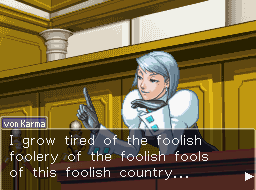
With the primary focus being on reading into witness testimonies, and giving the player an attachment to the immense cast along the way, the PW games are solid examples of what makes visual novels appealing.
Still, for the games to have a chance at selling in the US, the publishers and localization teams responsible usually try to find titles that involve gameplay of some kind; not just reading pages upon pages of text with little to no player involvement.
Not very surprising given how American gamers tend to expect some kind of action along the way.
This hasn't stopped die-hard VN fans from giving purist readers their fix, however.



The expansive 'Umineko No Naku Koro Ni'('When The Seagulls Cry') series, for example; an elaborate tale of magic versus reason, murders, witchcraft, and romance.
07th Expansion's PC novels spin one gripping tale, and remain one of the most widely known of the genre. It's also one of the best examples of a solid fan translation.
The Witch Hunt didn't just go all out in their translation works of the Umineko saga; they even got the attention of the series creator, Ryukishi, who went on to sanction their work, and even give them a reference in the story.
That's all good and fine for the comparatively small niche of readers who are savvy in patching Japanese titles, but what about going after the gaming population at large?
Localizing any VN title, even one with VN elements, remains a risky gamble.
RED Company's long-running Sakura Wars franchise, ever a huge success in Japan, finally had a title localized c/o NIS America, only to have an underwhelming performance when it came to sales.

A balanced mix of mecha strategic combat and the wooing of numerous female significant others, Sakura Wars remains one of the more enjoyable and innovative examples of visual novel RPGs.
Despite being a great game in its own right, Sakura Wars V is largely considered the worst in the series. Moreover, it was released both for a dying console(the PS2) and one that left it easily overlooked in a sea of shovelware(the Wii).
Whether it was the wrong game or the wrong time, the failure of NIS's endeavor seems to have largely spelled the end of Sakura Wars' chances in the states.
Fortunately, it didn't end hopes for the VN genre.
Aksys took a considerable gamble in localizing Chun-Soft's DS visual novel/suspsense puzzler, '999'.


The venture paid off in spades. The game went on to sell out all over the country, and continues to be reprinted to this day; up to its 5th printing at last count.
(It very much deserves it: 999 doesn't just tell a great story, it brings a great game along with it.)
With the success of 999, the flood gates appear to have opened, and VN fans have much to rejoice over.


Team GrisGris and 5pb's Corpse Party, a mix of visceral horror and traditional top-down RPG, was a pretty risky venture by definition for XSeed.
It deservedly did well for itself, and remains the biggest selling game on the PSP's PSN downloads this week.
(Which may not say much when the console is on its last legs, but a success is a success!)
Aksys aren't ones to be outdone, either.

Idea Factory's Hakuoki is next on their list, and as a rare first, this one's for the ladies: the protagonist is a female character, out to seek love and vengeance in feudal-era Japan.
As of recent, even some extremely dedicated fans have taken up the mantle, and created a visual novel of their own:


The controversial, and free!, Katawa Shoujo.
One of the more time-honored variants of visual novels, Katawa Shoujo is purely a dating sim: where all the available girls are afflicted with a handicap of some sort.
Despite the shallow-sounding premise, it's the solid writing, charming cast, and the ensnaring atmosphere that makes this one a keeper: and if the GameFAQs top 10 is to be believed, a very popular one.
It's also worth noting that some groups such as Manga Gamer and JAST sell official localizations of visual novels through the web, such as 07th Expansion's Higurashi(the precursor to Umineko), and the well-received Aselia The Eternal, though their works tend to skew more towards the eroge(adult) genre.
So what's next for the genre in the US? Only good things, if all the previous examples are to be believed.
I'm waiting with bated breath for an official Umineko localization, myself.
Thursday, January 19, 2012
Trampoline Gunmen III – Lucky Strike (PC)
 Due to a lack of time, motivation and the fact that I’m pretty sure no one ever actually plays the games I develop, I am abandoning TG3 and releasing the BETA to the world. The 2 player mode functions, with multiple characters, stats and special attacks, there’s a few animated backgrounds, and some ripped Street Fighter 2 music. That’s about it. The game is compiled as an EXE, so you won't need QB64 to run it - this also means it's Windows PC only..
Due to a lack of time, motivation and the fact that I’m pretty sure no one ever actually plays the games I develop, I am abandoning TG3 and releasing the BETA to the world. The 2 player mode functions, with multiple characters, stats and special attacks, there’s a few animated backgrounds, and some ripped Street Fighter 2 music. That’s about it. The game is compiled as an EXE, so you won't need QB64 to run it - this also means it's Windows PC only..Tuesday, January 17, 2012
Magazine Reviews - Nintendo Fun Club #2
Issue #2 - Summer, 1987
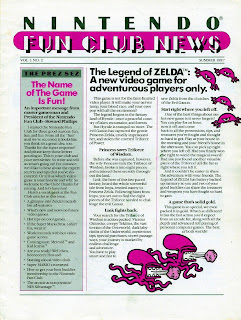 |
| Page One |
There is also a description of Pro Wrestling with some information on the game mechanics, as well as portraits of the characters. I'm presuming the character portraits are from the Japanese version, as they're done in an anime/manga style. Later titles for the NES and SNES, would have character portraits become "western-ized" for their US release. There would be some exceptions for this, but this would remain something of a constant until anime and manga started to become more popular uner the 16-bit generation.
Next up is the Pro's Corner column. We get a bunch of hints and tips for Super Mario Bros. In particular, they repeat the fireworks tip from last issue, as well as the continue code. There's also a trick for phasing through dungeon walls, and getting a small Firey Mario (as opposed to Firey Super Mario). We also get the unlimited lives turtle trick, and a trick for getting 50,000 points in the castles, and, finally, the Minus World cheat. We also get some tricks for Salom and Pro Wrestling, but they're really basic.
We also get a look at the first after-market controller for the NES - the Advantage, which features rapid fire and an arcade stick. What more could you ask for?
Monday, January 16, 2012
Gamestop is a really shitty store
No, today we'll be looking at how their stores are merchandised. This particular store is the one in the Palisades Center in West Nyack, NY.
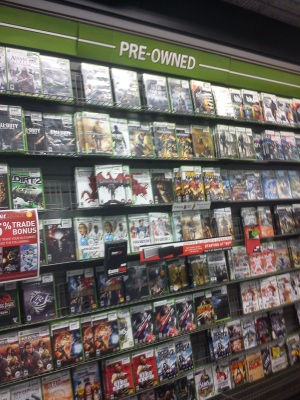
Here's the biggest issue. On both walls, the used games are by far the most prominently displayed. Most of the top tracks have their stock facing outwards, the rest are oriented spine outward. Where are the new games, you say? The ones whose sales actually count towards supplying the industry with money?
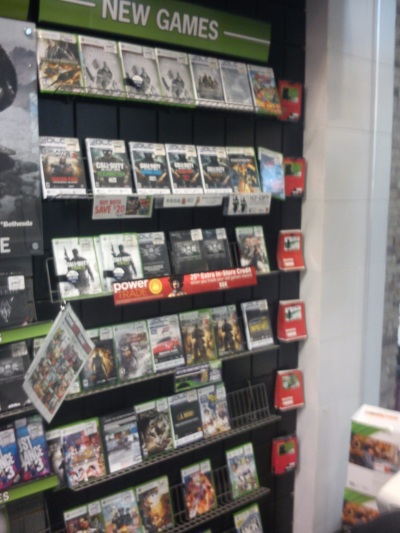
A tiny spot shoved in the corner, you say? Hmmm. Now when companies put all of that crappy new copy DLC in their games, you know why.
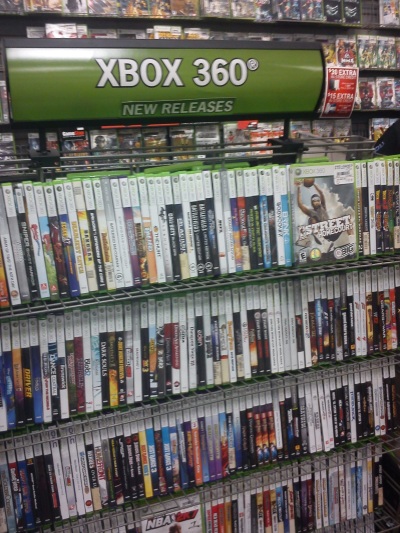
The rest of the new games are on their own separate racks. Technically these are in the middle of the store, but they're all faced spine outwards, and not nearly given as much space as the used titles. Gamestop seems to be doing everything in their power to make these as inconspicuous as possible.
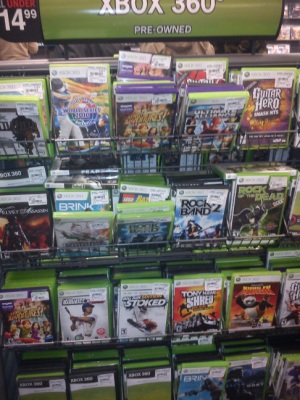
Away from the new/used games debacle, we have these shelves. They're meant to be the bargain bin, but Christ if you could find anything in there. They're never anything remotely resembling alphabetized. Technically facing the covers out makes them more prominent, but most of the games are buried behind the rest, requiring that you flip, one by one, through everything. That simply takes way too much time for what would amount to impulse purchases anyway. The old, literal bargain bins may take up more space and don't allow titles to face out, but they were quick and easy to scan though.
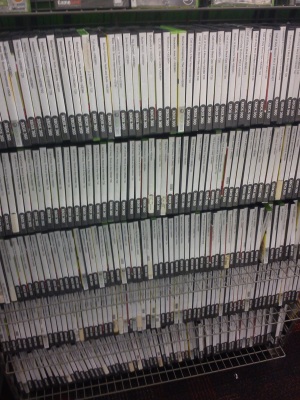
Oh look, whole shelves of games without proper packaging. One would think that you could get a serviceable discount for damaged goods, but no - a beaten up copy of Skyrim without proper materials is the same exact price as one with all of the goods. Gamestop has been doing this forever, but it's still a pet peeve of mine. Similarly, I wouldn't have an issue with them gutting products if they'd give you a small discount for buying a floor model, but they definitely don't do that. Awful.
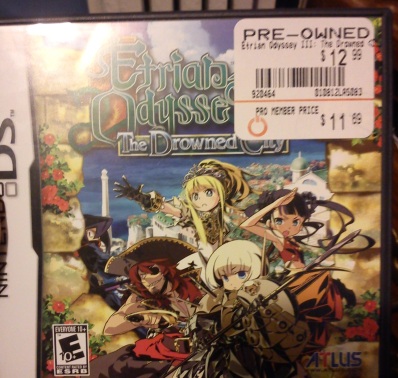
I did buy this though. $12 is a good price for a copy of Etrian Odyssey III, which is going for twice that price online. This particular store actually still had boxes and manuals for some of their DS games. Many stores have taken to throwing them out to purportedly make space for 3DS games. How does that even make sense to sell? Do people actually try to squint through those display cases with all of those loose DS games?
Anyway, the above game was actually mislabeled - it should've been $14.99 rather than $12.99, but the cashier gave me the lower price anyway (as retail establishments should). In fact, the employees here were extremely nice. Gamestop workers have been stereotyped as being the worst kind of mouthbreathing fanboys, but I've very rarely ran into those sort of people, and the usually the folks I find working in stores here in NJ are very cool and very professional. (In fact, if any Gamestop district managers are reading this, I have to commend the staff at the Westfield, NJ store for being extremely courteous and very friendly, probably some of the best crew I've seen in a retail establishment.) The fact that they can function so well despite the dreadful metrics and rules imposed by the Gamestop corporation, not counting the typical lousy pay in such jobs, shows a tremendous amount of fortitude on their part.
The gist of all of this is, I find it increasingly less useful to go into Gamestops anymore. Even their B2G1 free sales have become less useful since the general price of their games is so much more expensive than Amazon, Gamefly, Newegg, or any number of places online or elsewhere. Just do what I did, and accidentally buy a membership to Amazon Prime, so you don't need to preorder anything for their stores again.
Saturday, January 14, 2012
Update 1/14 - Rusty, Kabuki Quantum Fighter, Hatoful Boyfriend, Kaeru no Tame ni Kane wa Naru

A handful of brief but interesting articles this week: Rusty may sound familiar to anyone who really keeps up on Castlevania lore, since it's basically a huge ripoff/homage developed for the PC98, although it stars a scantily clad anime chick as opposed to a hulkman barbarian; Hatoful Boyfriend has been making the forum rounds lately as a source of great comedy, considering it's a visual novel where you date pigeons; Kaeru no Tame ni Kane wa Naru is one of those "lost" Nintendo titles that they never bothered to localize, even though it's quite charming; and most NES fans probably know Kabuki Quantum Fighter for being that weird game where you infilitrate an organic computer and whip enemies with your hair, but you may not know it was actually a tie-in with a movie around the same time called Jipang, which in turn got a few video game sequel several years back, published by Konami, called 7 Blades. Very odd story behind all of thise!
Anyway I spent a good chunk of my Friday night playing this week's kusoge, Perfect Weapon, or at least trying to. It's not really as obscure as some of the awful games we feature here, as it's pretty well known to be an atrocious game, I was really just confirming it, plus it was lying around my room for some reason. I was under the impression it used digitized sprites, but it's actually set up like Resident Evil - of course a game focusing entirely on melee fighting using tank controls is already doomed to failure, and yet this one somehow goes several steps worse. And we're featuring Azure Dreams this week, since we released some localization files for a few Konami games over the past week. Keep your eyes out for more soon.
Cave's Financial Issues - We Try to Help
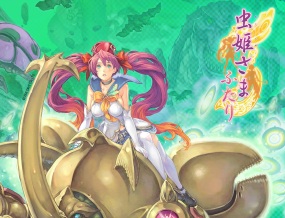
According to Andriasang
Cave Lowers Earnings Forecasts
Publisher puts development of some content on hold and pours resources into social games.
Oh no! This is terrible! Sometimes we rag on Cave's design philosophies (which incidentally they've fixed a lot of with their 360 ports since I wrote that) or mock some of the more elitist members of their fanbase, but damned if we don't really enjoy their games. It would be completely terrible to see the company waste away into social nonsense, and then (probably) into oblivion. Therefore, we will be giving our armchair advice to help these guys out!

(1) Realize that you have an audience outside of Japan.
Actually most of the bits of advice revolve around this. If you are living in America, you can purchase Deathsmiles cheaply in the store, Guwange for $10 on the XBLA, or a handful of (extremely well made) iOS ports for about $10 each. There's also Deathsmiles IIX on Games On Demand, though it's $30 and still in Japanese, which is frankly a bit lazy. If you live in Europe, you can do all of this (except for Deathsmiles IIX I think), and also grab Dodonpachi Resurrection (and soon Akai Katana) for fairly cheap. So Cave games are certainly more accessible than they were a couple of years ago. They've even started an English blog and various fan pages.
But that's only a fraction of their catalogue. To get anything else, you need to resort to (A) expensive imports (the Muchi Muchi Pork and Pink Sweets double pack already looks difficult to get ahold of) or (B) emulation, and therefore piracy. This is a terrible situation! MAME supported many of these games briefly before being forced to take them down. Many people downloading these ROMs would probably buy a copy if one were made available - it's the awesome Valve "pirates are really underserved customers" logic. Which leads us to:

(2) Understand how digital distribution works, and embrace it.
Steam is ridiculously awesome. For as much as I prefer physical media, the outlet which it and other DD outlets can distribute independent software has drastically improved the breadth of games that can be published. So why haven't Japanese companies embraced it?
Exactly why is anyone's guess. The country has never been big on PC games, and perhaps they just don't see it as a viable gaming platform. In Japan that may be true, but it's definitely not the case in America and Europe. They also seem reticent to understand the economics behind it. Carpe Fulgur's upcoming Fortune Summoners is set at the relatively expensive price point of $25, primarily because the original Japanese developer requested it. (UPDATE: Though they've just lowered the price to under $20 to fall in line a bit more.) Never mind that the driving point behind DD sales is that their low prices (and low overhead) allow for substantially more purchases, usually enough to make up for the smaller profit margin per unit.
Here's my theory - the Japanese game industry is excellent at focusing on niches. They know that while some products have a very specific audience, that audience is very faithful, and don't mind paying premium prices for their product. That's why Cave games (and other niche products) are sold (or rather, used to sell) at full price, whereas anything over $30 outside of Japan would be unsustainable. Lowering the prices of their games would require them to break out of that mentality, which used to be a proven business model. You can already see shooter fans get defensive when you suggest that maybe $80 is too expensive for a 2D game - I'm sure that the same applies for the developers as well, as a matter of pride for not wanting to devalue their software. But the market ultimately determines the price, not the seller, and not understanding that could be fatal.
What all of this is saying is that Cave should work to port all of their back catalogue to something like Steam, and sell them for like $10-$20 each. Why not work with the MAME team to release them legally so people don't have to pirate your ROMs to play Ibara Black Label? And while getting on Steam isn't as easy as other PC digital distribution services, it's still much less of a hassle than the XBLA or PSN, which tend to get buried and are mired in bureaucracy.

(3) Exploit the market for tie-in goods. Even more.
Specifically, CDs. Cave games have outstanding music. They are taking full advantage of this in Japan! Typically their soundtracks sell out almost immediately and fetch high prices on the secondary market. Lately they've been reprinting them for retail price. Fantastic! Now, keeping with the digital distribution model, stick them on iTunes and make them available outside of Japan.
But much like with games, Japan's approach to iTunes is similarly baffling. Music CDs over there have always been ridiculously expensive - we complained about $18 CDs here, but they're typically about $25-$30 over there - and digitally released albums haven't gone down in price as much as they should have. The Radiant Historia soundtrack costs 3000 yen or so on CD, and 2400 yen on iTunes. That's not really much of a difference. That may work in Japan (somehow) but they'd also need to get in line with the rest of the market and price them at $10 for the Western market to make it viable.
As a tangent, Cave used to offer these reprinted soundtrack CDs to overseas customers on their international store. They're retail price and thus expensive, but I decided to bite the bullet and drop a few hundred bucks on my favorites. Except right when I was about to do this around Christmas time, they removed them from the store for some reason. (They've been sold out on the Japanese store for awhile, but they've since set up shop on Amazon Japan. Which won't ship them overseas.)
Anyway, I e-mailed them asking if they'd be back. Now, Japanese customer service is hilarious. In general, when given a yes/no question, a Japanese person won't directly answer "no", instead they prefer to subtly imply it and leave it for the other person to read between the lines. This is meant to be polite, but to an American, it seems insincere and dodgy. So when they say something like "We'll do our best to meet your product request", that actually means "No, we are not going to do this". If can't sell them to me (lots of other online Japanese stores famously hate non-Japanese money and refuse to ship overseas), just say so. At any rate, in the past few days the store has gone down for some reason, so it's just as well.
Maybe keep away from Windia's dark urine and the dakimakura though. Lots of people rag on Cave's recent obsession with female characters, lolita or others, which is one of those things that will just never cross cultural boundaries. Suggesting that they make their games less Japanese would be terrible though, because that's ultimately what makes them so unique. That hurdle will always be there for a lot of people, unfortunately.
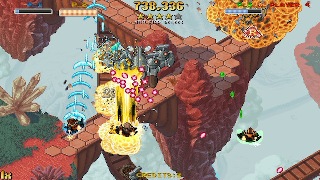
(4) Look at Jamestown.
I'm not a huge fan of Jamestown, and on a quality level I think it rather pales in comparison to Cave's library. But at the same time, it's also much, much, MUCH more approachable to the average person than any of Cave's titles. It's easy to understand, get into, and enjoy without needing to study superplay videos, peruse FAQS to figure out scoring systems, and spend the hours upon hours practicing in hopes to get anywhere near competent. All of the work to get into Cave games is usually worth the effort, but that's not immediately apparent to a lot of people, who only see huge insurmountable mazes of bullets and a fanbase whose slimier elements are quick to turn up their noses as so-called casual gamers.
I wouldn't want Cave to make a games just like Jamestown. But they should at least pay attention to how this game was developed, what it's doing, and attempt to implement them in maybe some kind of alternate game mode. The iOS version of Deathsmiles included an RPG-style mode where you could use gold, obtained from points, to buy new weapons and stuff. Compared to the Otomedius games, it was handled pretty well, and it was also totally separate from the main game, so it could be ignored if that wasn't your thing. Who knows if this actually affected sales, but keeping in mind less hardcore gamers, without watering down what longtime fans enjoy about your games, definitely could not hurt.
At any rate, I do wish Cave well. I have a feeling this all came about because DDP Black Label, Akai Katana and Instant Brain must've flopped. (The separate release of DDP Black Label especially - I think there was less than 1,000 entries on the leaderboards for Arrange mode, last time I checked.) I'd hate to see a favorite developer lumber and fall like so many smaller studios this generation.
In Defense of Final Fantasy XIII, and thoughts on the sequel
Let's get the controversy out of the way: I loved Final Fantasy XIII.
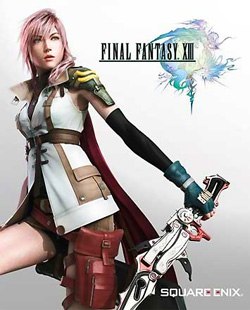
XII didn't keep my interest for more than five hours(though I'll still finish it eventually).
XIII hooked me from start to finish. The game starts out with a bang, and never lost momentum. None of the cast felt offensive or out of place. I thought they all had a deserving role in the plot, even Serah. Even the most annoying, Vanille, still had a tolerable purpose.
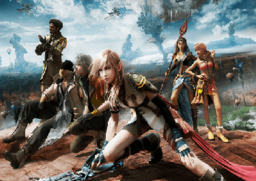
The battle system was fresh and unique, and even though it nickel and dimes the tutorial process, the steady difficulty scale made up for it, and by endgame, if I didn't have it mastered, the resulting failures and game overs were entirely my own fault.
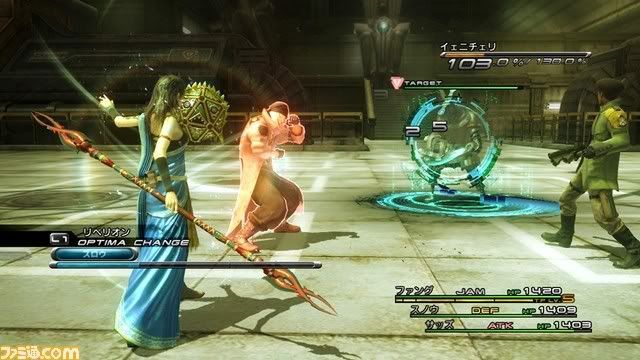
And of course, the game is a visual and audio delight.
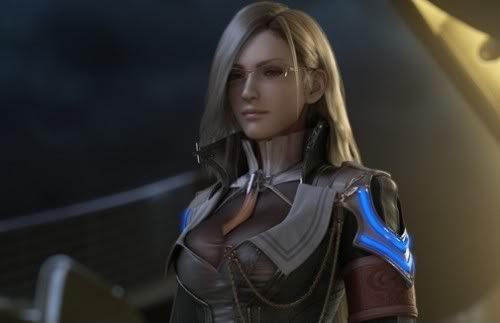
Even the ending was an appropriate close, and they even made that awful My Hands song actually strike a chord with me. No small feat.
Now then, the sequel.

First off, this game was made with either major budget limits or a lack of polish time, and I think it shows. The graphical quality is a huge step back. Not just in the actual rendering, but everything from facial expressions to character mannerisms seem like they were phoned in, and recycle the same gestures and features more often than not.
Whether it's because they were rushing this to market or to make it more palatable to 360 owners(for less graphical differences between versions or simply keeping the game on a single disc), the PS3 version suffered a lot for it.
The music, thankfully, doesn't fail. XIII's OST was amazing, and it sounds like they're improving on a great thing with XIII-2's.
(Shin Megami Tensei/Persona's) Shoji Meguro would be proud of what the XIII-2 sound team has accomplished here.
There's also a Chocobo theme with deathcore metal-esque lyrics. The less said about that, the better.
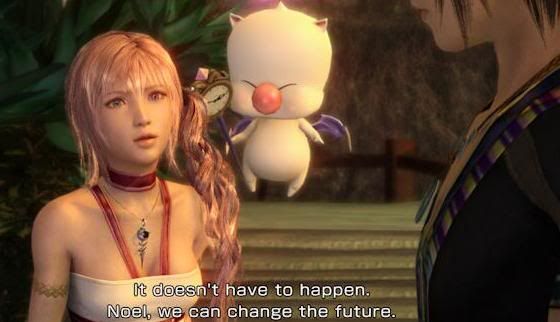
The story? You've got to me kidding me. Remove the likable cast in favor of a sexed-up Serah(who I even liked before) and some random pretty boy? For god sake's, Square. One step forward, go tumbling back off a cliff.
That's to say nothing of the actual plot, which reeks of worse nonsense fanfiction than X-2's, and that's saying something.
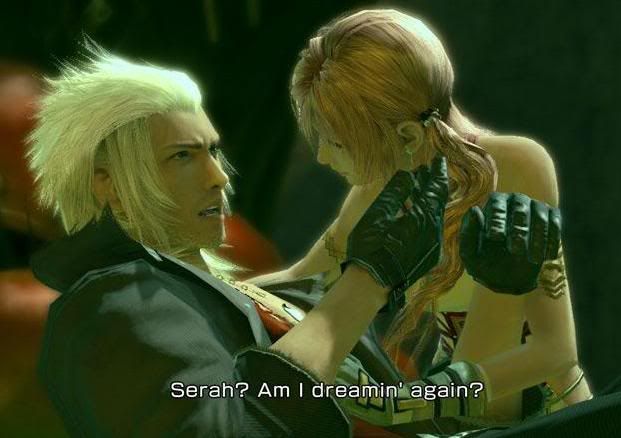
(WTF, Snow. I thought you were cool before.)
It involves time travel, moogles, and Lightning turning up missing due to T I M E P A R A D O Xes.
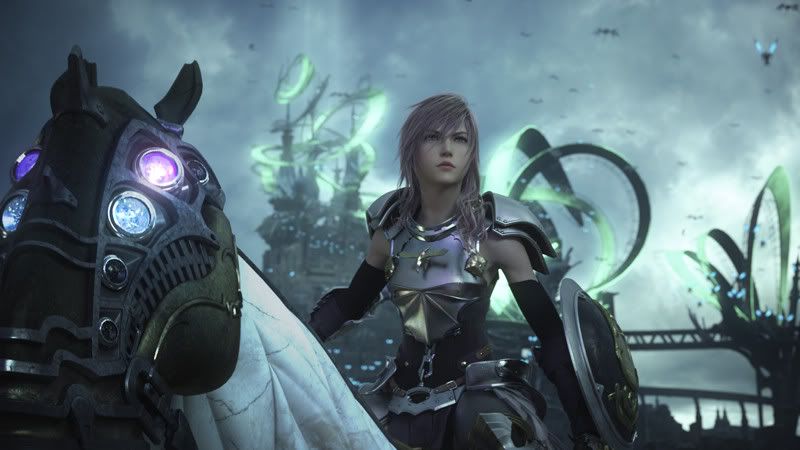
And reducing Lightning to a minimal role, when she's the best protagonist the series has seen in years? Are these guys insane?
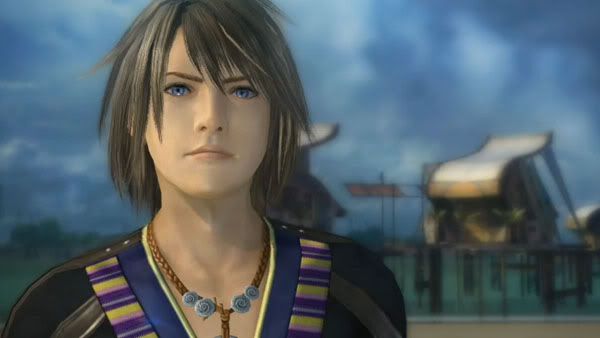
I'll say this, to be fair: Noel is not nearly as despicable as I expected. He seemed like a genuinely tolerable character. Oh yeah, and Mog's adorable.
So just like X-2, I'll probably just turn my brain off and play it for the game itself. Good thing too, because that's where XIII-2 really shines.
(I'm assuming you played XIII from here on out.)
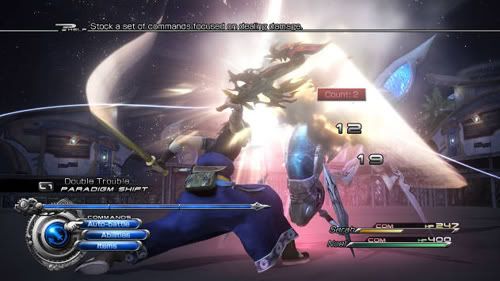
They dispensed with the BS here. Right from the getgo, the Paradigm System is entirely open. Serah and Noel get a full array of roles within minutes of the demo, and the monsters are recruitable not long after.
I'm still not keen on replacing a third party member with swappable monsters, but for what it is, they made it work, almost akin to a Shin Megami Tensei system. The more you use them, the better they get, and they have nifty benefits, like powerful attacks and even customizable appearances. Much like SMT, I'll probably have to make the tough decision of sticking with who I have or passing them up for newer, stronger ones.
The new dungeons are immense. I kind of liked how linear FFXIII was, and I didn't mind NPCs saying their thoughts as I walked by instead of having to ask for their opinion. XIII was a streamlined experience, and all the better for it.
Let's be honest here: stopping to talk to every NPC in RPGs tends to be jarring and way too time-consuming. XIII-2 really didn't need to bring that back. That said, if you're that person who missed towns and talking to lots of random people, well, this is now the game for you!
Lastly, branching paths. This is new for (mainline) FF in general, and a welcome breath of fresh air. I was genuinely stunned when the game asked Serah to decide how to proceed, and it made me stop and think on it.
As much as I love them, especially for what they add to replay value, they're a completionist's nightmare.
I already preordered the full game's LE(well, to be specific, someone bought it for me as a present in advance, otherwise I would've waited), so I guess I'll see if the rest of the experience can either add to this or ruin it.
In summary:
Graphics: B-
The game is still hardly bad looking, just a huge step back. They took years to make FFXII, with good reason. This looks like it took months.
Music: A
Not sure about the lyrics, but the music itself is wonderful. If you gotta replace Uematsu, Masashi Hamauzu is a fine start.
Story: D
WTF. At a glance to wiki, this wasn't penned by Motomu Toriyama, the guy who single handled destroyed Parasite Eve with The 3rd Birthday, but I find it hard to believe he didn't dream up at least some of this nonsense, since he directed it.
This one's just for the gameplay, unlike its predecessor.
Gameplay: A+
FFXIII kicked into high gear on all fronts. This will easily be the highlight.
Replay value will be through the stratosphere, especially if this has Chrono Trigger-esque multiple endings as I've heard.
Thursday, January 12, 2012
Musings on the ethics of shooting screens

Ever since I first hold my print copy of HG101 Presents: The Guide to Classic Graphic Adventures in my hands, there's one anachronism that personally keeps bugging me about it. It uses an old-ass CRT monitor alright, but the screenshot of King's Quest that's 'shopped onto it looks like it would be displayed in DOSBox or ScummVM (with default settings):

Instead of filling out the entire screen, it leaves huge black borders at the top and bottom. That is not the way the game was meant to be viewed, but it's the way we nowadays play those old games with our modern monitors, where every pixel is always as high as it is wide. At least it is this way whenever we play old games the "pure" way, without additional scaling and filters applied, when pixels are as blocky as they should be. Or shouldn't they?
It hasn't always been like this. In fact, the age of pixel-perfect screenshots only really came upon us with the widespread of emulators around the 2000s and cleaner printing in the magazines. In the very beginnings, long before even AV-capturing was available, creating screenshots used to be an art; not for skillfull photographing techniques or the timing to get the right screenshots, no, "screenshots" were literally drawn by artists, often with greater-than-life proportions and situations that could have never appeared like that in the game. In times of limited magazine space and the laborous process of having to hand-draw each screens, as much action as possible was often squeezed into these images. The philosophy behind this is best exemplified in this reader letter to the late Bill "The Game Doctor" Kunkel in Electronic Games March 1983:
Q: Back in your second issue, on the last page, there was an advertisement for Midway games. Notice on the Pac-Man screen that the gobbler's on the apple but he's only got'460 points—not nearly enough to reach the apple rack. How did they do it? (Grey Oliver, Austin, TX)
A: Most of the playfields seen in magazines and advertisements, Grey, are not photographs but artist's reproductions of what you actually see on the monitor. There are several reasons for this, most prominent being that videogame screens are quite difficult to photograph clearly (as enyone who has ever tried to record a high score can testify). Even the best pictures tend to feature considerable distortion as the glass tube is slightly domed, producing a "bubble" effect.
Also, artistic renderings of playfields allow a single picture to tell a more complete story than any single frame of actual game play. Seldom do all of a game's most picturesque objects appear on screen simultaneously, but in a drawing, the potential player gets a better look at all the contest's elements.


Especially (but certainly not exclusively) in advertisements, this often led to some creative liberties taken with the game, showing off bigger sprites and more colorful effects than the machine could ever display compare with the above "screenshot" of Donkey Kong from Video Games these other two out of Video Invaders (left) and Invasion of the Space Invaders.
 |  |
Especially the latter's open discontent for the game seems to be represented in the way Mario is shown:

Obviously, this method had to go away with the rising complexity of games' visuals, although a magazine full of skilled artists' representation instead of actual screenshots would be definitely interesting.
But let's get back to the initial issue: Nowadays the blocky pixel-perfect image has become a weird anachronist ideal in retro gaming, despite the fact that the actual designs were neither displayed, nor conceived in this way. Taking the risk of overusing this comparison, have a look at the abstract concept for the way Pac-Man was supposed to look in the minds of the player, how he actually would have looked on an arcade TV screen in the 1980s, and how most players experience him now via emulation in MAME (left to right).
 |  |  |
Now take a look at this villain from Might and Magic 5:
 |  |
He used to have a much larger and more impressive build when meeting him in 1994. Back in the era of SD television, most games in Europe ended up compressed in a similar way, due to the PAL video standard havig a higher vertical resolution than NTSC. While simply unavoidable with 2D-games, not properly converting the resolution turned to an important point of critique in the 32-to-64-bit era. But nowadays, everyone seems to take all these characters suffering from dwarfism at face value. It's the other way around with NES and SNES games, where the pixels are actually more wide than high. The pixels, it seems, have become more important than the overall impression. But what do we make of extreme cases like Ganbare Goemon: Kuru nara Koi! Ayashige Ikka no Kuroi Kage on the PSX, whose original resolution looks like this?

Another infamous issue is dithering, which many old games abused to make a game look like it had a higher color palette or even transparency effects. Even back in the day, this could easily be spotted on a big enough screen, but from a big enough distance a game like Ristar may have looked closer to this:

As opposed how we show it at Hardcore Gaming 101:

Let's take a look at Ninja Gaiden II on the NES for an example of what can go wrong when documenting it with the modern methods. A random pixel-perfect screenshot taken from the game in an emulator may look like this:

What's immediately off-putting is the fact that only one of the two ninja shadows is visible, while only the shuriken thrown by the invisible one is on display. The next frame explains the mess:

In the good old days, sprite flickering wasn't simply a glitch, often programmers used it willingly to simulate transparency. On a really bad old TV, the shadows (and shurikens) wouldn't really be viewed as constantly phasing in and out of the picture, but as one always visible, if unsteady, shape. A perfect emulator screenshot in this case produces a very wrong image of the scene. Actually the impression would be more like this:

Of course there are still problems left with that, as the elements from the second screen are always one frame of animation ahead of the first, which becomes a real problem when one of the permanently visible elements moves in between, but there's really no way around this.
Next, NES games, while displayed in 256x240 resolution, were always made under the assumption that the upper and lower 8 lines would be cut-off on a standard NTSC screen, which brings us to this:

Then we would have a 4:3 screen ratio:

But we're still not done: Many emulators actually allow options for scanlines, resulting from the digital-to-analog conversion for contemporary TV sets. Of course none of these options really look like the real deal, and usually turn out completely wrong when resizing to the thumbnail size of 320x. If you've got a really old TV, its frame may also cut off the corners:

There's yet one more problem when it comes to preview material and beta version. Obviously, we can't take our own screenshots (unless the versions got leaked) so we're often stuck with either:
-a low-quality old magazine shot:

-a watermark-spoiled shot from a shitty irrelevant website:

Well, since in this case I'm lucky enough to have both, I won't put up with any of that bullshit, and instead go on restoring the best possible variant (that I can achieve with my limited skills).
 |  |
It may not look perfect (but it can get close when done by someone who actually knows her stuff with image editing), but turns out far better than any of the other available options.
N64 screenshots in general are an issue, as the emulators still haven't gotten (and maybe never will get) the effects quite right. Besides the typical hardware blur, the fog looks also much different on a real system, and on some bigger textures one can see the seams in between tiles. With a capture card, on the other hand, one has to live with additional AV blur and off colors, which hare always dependent on individual TV settings.
 |  |
The seemingly simple question of selecting "good" screenshots also often bothers me—I usually just take hundreds of screenshots randomly while playing (unless there's something specific I want to show), and then select those I deem the most interesting. But do those really represent the game properly when I have 20 interesting screenshots and 300 boring ones? Let's assume you write a regular column of game introductions, and you get 3 screenshots to chose for each. My impulse for a game with three different levels would be to get a screenshot from each to show the most variety. But that approach would also make it impossible to do the game with 30 different stages justice. When 90% of the time in an RPG is spent wandering around bleak environments and dull dungeons, can I "rightfully" show 50% battle scenes?
There are so many possible ways to represent (old) games in screenshots. Every site or magazine has its own policies to deal with these issues, Hardcore Gaming 101 sure has its own. But is there a "right" way to do screenshots? Which do you consider the "best" one? Are there some edits you consider immoral/wrong? Let's see some opinions.
